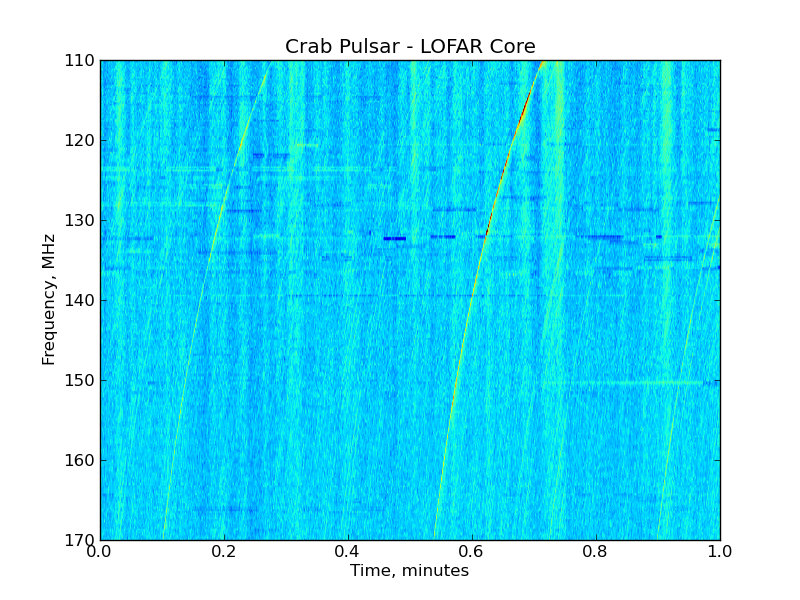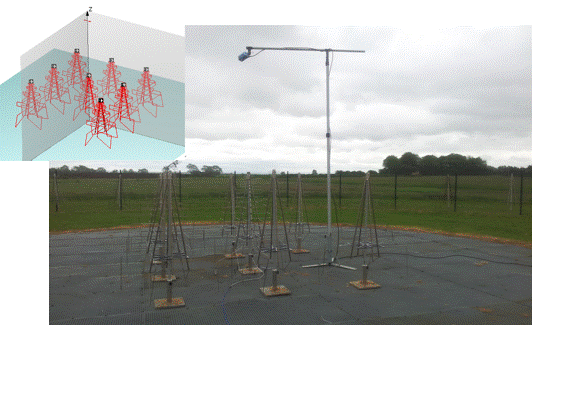![]() © Adriaan Renting/Ilse van Bemmel/Harm-Jan Stiepel
© Adriaan Renting/Ilse van Bemmel/Harm-Jan Stiepel
On April 24th ASTRON, JIVE, NOVA and CAMRAS organised the annual
Girl's Day. The main purpose of this event is to immerse girls in their early teens in science and technology related professions. Every year girls leave with a more positive image of the work done here, and get a better idea how science and technology change the world around them. This may well stimulate them to choose a more technical career path for themselves.
This year 24 girls visited, had lots of fun during the lectures and hands-on workshops. Split up in smaller groups they attended two 20-minute talks, and four workshops of 45 minutes each, which are organised in two blocks of 1 lecture and 2 workshops with lunch break in between. The day was concluded with a quiz for the full group, where we tested their knowledge of science and engineering.
The two lectures cover the basic principles of radio astronomy, given by Ilse van Bemmel, and engineering, given by our own Engineer Powerwoman Gabby Aitink-Kroes. The four workshops had the following themes:
Chatting with Astronomers: The girls use text chat to talk with a female Astronomer, and draw a picture of what they learn about her. The goal is for them to learn what the life of a scientist looks like. Roy Smits will show the results of these in a separate Daily Image.
Programming with Minecraft: We use the mod ComputerCraft for the popular computer game Minecraft to have the girls control and program a small robot in the game. This workshop was new this year, but a whopping success once everyone got the feel for it. Some of the teams got a real taste of what it means to be a programmer and had a lot of fun.
CAMRAS volunteers showed the girls the Dwingeloo Telescope, explained what a pulsar is, and then had the telescope track a live pulsar for the girls to listen to. Afterwards they did an experiment demonstrating the Doppler effect using a tennis ball on a rope with a small beeping speaker in it.
Soldering: The girls are taught how to use a soldering iron and how to put different components on a circuit board. With this they then constructed a small device with blinking LEDs that would show the words LOFAR and ASTRON if you wave it around. Initially the girls usually react negatively when we tell them about the workshop, but at the end of the day for most of them it's the most enjoyed part of the event.
As in previous years, we asked the girls and their accompanying teachers for their feedback. Overall we can conclude that this day was a big success! Everyone involved had lots of fun talking about their jobs and explaining to the girls what working here is like. But most importantly, we managed to impress 24 young girls that science and technology is tons of fun!
The annual Girl's Day is part of a European initiative to promote girls to choose a career in Science and Engineering. In the Netherlands the Girl's Day initiatives are coordinated by VHTO. In the Netherlands 300 organisations and 9000 girls take part, while in the rest of Europe several hundred thousand girls visit over ten thousand locations.
The animation above shows an impression of the events during the day. For a full list of all the pictures taken during the day, visit: All Girl's Day Pictures
 © Richard Fallows
© Richard Fallows © Tim de Zeeuw
© Tim de Zeeuw © NL SKA Office
© NL SKA Office © Rob Millenaar
© Rob Millenaar © ASTRON
© ASTRON © Gemma Janssen
© Gemma Janssen © B. Fiorelli
© B. Fiorelli © Eric Clausen-Brown (MPIfR)
© Eric Clausen-Brown (MPIfR) © Adriaan Renting/Ilse van Bemmel/Harm-Jan Stiepel
© Adriaan Renting/Ilse van Bemmel/Harm-Jan Stiepel © ASTRON + Girlsday-Girls 2014
© ASTRON + Girlsday-Girls 2014 © Johan Pragt
© Johan Pragt © MSSS / ASTRON
© MSSS / ASTRON © NASA/GSFC
© NASA/GSFC © ASTRON
© ASTRON © Nico Vermaas
© Nico Vermaas © ASTRON
© ASTRON © UBC
© UBC © NOVA Optical Infrared Instrumentation group
© NOVA Optical Infrared Instrumentation group © R. ter Horst
© R. ter Horst © Felix Bettonvil
© Felix Bettonvil







